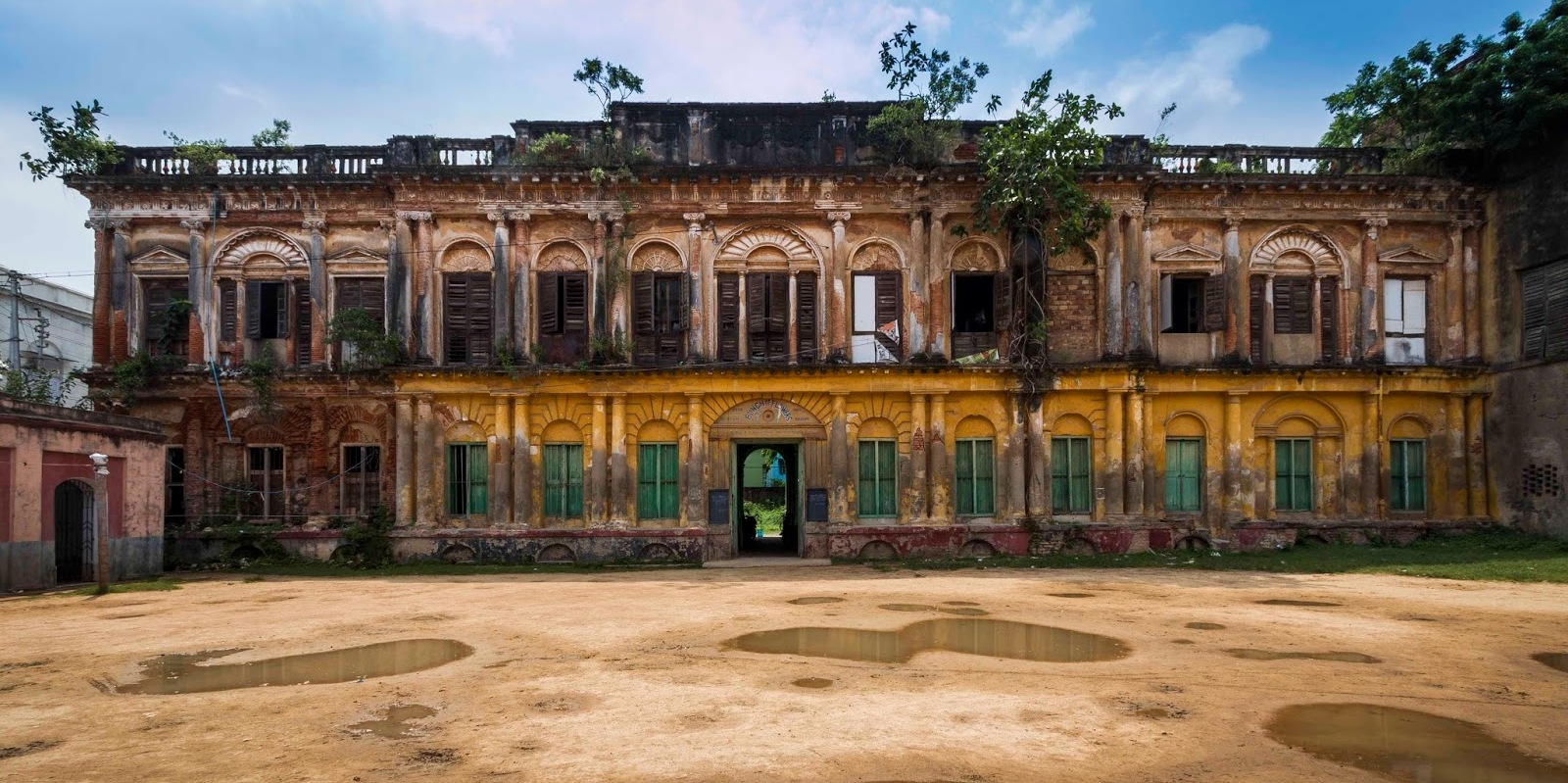
Serampore, also known as Frederiksnagore, is a historic city located on the western bank of the Hooghly River in the Indian state of West Bengal. With a rich cultural and historical legacy, Serampore has witnessed the influences of Danish, British, and Indian cultures, making it a truly unique destination.
Established as a Danish colony in 1755, Serampore holds the distinction of being one of the first European settlements in India. Over the centuries, it has served as a bustling trading center, a hub of intellectual and cultural exchange, and a significant center for education and social reforms.
Today, Serampore continues to enchant visitors with its architectural grandeur, serene waterfronts, and vibrant local markets. From exploring its colonial-era buildings to diving into its fascinating history, there is something for everyone in this captivating city.
Key Takeaways:
- Serampore, a city in West Bengal, has a rich history as a Danish colony and is known for its cultural heritage, educational institutions, and vibrant arts scene.
- Serampore offers a diverse culinary scene, picturesque waterfront, and a calendar filled with festivals and celebrations, making it a vibrant and lively city to explore.
Serampore is a city in the Indian state of West Bengal.
Located on the western bank of the Hooghly River, it is a part of the Kolkata Metropolitan Area.
Serampore is also known as ‘Frederiknagore’.
The city was named after Frederick, the crown prince of Denmark, in the 18th century.
Serampore was a Danish colony.
It was under Danish rule from 1755 to 1845, making it the only Danish colony in India.
It has a rich cultural heritage.
Serampore is known for its historical buildings, including churches, temples, and educational institutions.
The Serampore College is one of the oldest educational institutions in India.
Established in 1818, it is a renowned center of learning and attracts students from all over the country.
Serampore is famous for its bookstores.
The city has a thriving literary culture and is often referred to as the ‘Book Town of India.
It has a vibrant arts and crafts scene.
The local artisans are known for their intricate work in pottery, woodwork, and embroidery.
The Serampore Rajbari is a grand palace.
It was the residence of the Danish Governor and is now a popular tourist attraction.
Serampore has a strong connection to Indian independence.
It was an important center for the freedom movement and witnessed several historic events during the struggle for independence.
The Serampore Mission was established by Christian missionaries.
It played a significant role in the spread of education and Christianity in the region.
Serampore is home to many festivals and fairs.
The residents celebrate festivals like Durga Puja, Diwali, and Christmas with great enthusiasm and grandeur.
The Hooghly River flows through Serampore.
It is a picturesque waterfront where locals and visitors can enjoy boat rides and breathtaking views.
Serampore has a diverse culinary scene.
From street food stalls to fine dining restaurants, the city offers a wide range of delicious dishes.
The Serampore Railway Station is an important transportation hub.
It connects the city to Kolkata and other major cities in India.
Serampore has a rich history of literature.
Many renowned poets, writers, and intellectuals have hailed from this city.
The Serampore Town Hall is a beautiful heritage building.
It serves as a venue for cultural events and conferences.
Serampore is known for its handloom industry.
The city produces exquisite textiles and sarees that are in high demand.
It is a melting pot of different cultures and religions.
Serampore is home to people from various communities and faiths, creating a harmonious social fabric.
The Serampore College Library is one of the oldest libraries in Asia.
It houses a vast collection of rare books and manuscripts.
Serampore has a thriving theater and performing arts scene.
Local theater groups and artists showcase their talents in various venues across the city.
The Serampore Museum exhibits artifacts from the Danish colonial era.
Visitors can learn about the history and heritage of the city through the museum’s exhibits.
Serampore is known for its agricultural produce.
The fertile soil and favorable climate contribute to the cultivation of crops like jute, rice, and vegetables.
The Serampore Strand is a popular promenade.
It offers a serene environment for leisurely walks and catches a glimpse of the Hooghly River.
Serampore has a bustling market.
The local market is a hub of activity, selling a wide variety of goods, including fresh produce, spices, and handicrafts.
The Serampore Cemetery is a historical burial ground.
It holds the remains of Danish officials and soldiers from the colonial period.
Serampore is easily accessible from Kolkata.
The city is well-connected by road, rail, and waterways.
Serampore hosts the Serampore Book Fair.
It is an annual event that attracts book lovers from all over the country.
The Serampore Clock Tower is a prominent landmark.
It stands tall in the heart of the city, reminding visitors of its rich history.
Serampore is a center for traditional handcrafted jewelry.
The skilled artisans create beautiful pieces using techniques passed down through generations.
The Serampore Ferry Ghat provides transportation across the river.
It is a convenient way to travel between Serampore and other riverside destinations.
Serampore has several heritage buildings converted into heritage hotels.
Visitors can experience the charm of the past by staying in these restored properties.
The Serampore Stadium hosts sports events and matches.
Cricket and other sports are enjoyed by locals and tourists alike.
Serampore is a center for handloom weaving.
The city is known for its intricate silk and cotton textiles.
Serampore is a city of festivals and celebrations.
From religious festivals to cultural events, the city’s calendar is filled with joyous occasions throughout the year.
Conclusion
Serampore is a fascinating city that is steeped in history and culture. With its rich heritage, beautiful architecture, and vibrant community, there is no shortage of things to explore and discover in this charming city. Whether you are interested in historical landmarks, art and literature, or just want to experience the local way of life, Serampore has something for everyone.
From the famous Serampore College to the serene banks of the Hoogly River, every corner of Serampore has a story to tell. Its close proximity to Kolkata also provides easy access to numerous attractions and entertainment options. So, whether you are a history buff, an art enthusiast, or simply looking for a unique travel experience, Serampore should definitely be on your radar.
FAQs
1. What is the history of Serampore?
Serampore has a long and storied history, dating back to ancient times. It was once a thriving Danish colony and played a significant role in the Bengal Renaissance. Today, you can still find remnants of its colonial past in the form of stunning architecture and historical landmarks.
2. What are some must-visit attractions in Serampore?
Some popular attractions in Serampore include the iconic Serampore College, the Danish Governor’s House, and the serene Danish Cemetery. The Archeological Site of Serampore and the Hoogly Riverfront also offer beautiful views and opportunities for leisurely walks.
3. Is Serampore easily accessible?
Yes, Serampore is well-connected to Kolkata and other major cities in West Bengal. It can be easily reached by road or rail, and there are frequent public transport options available. Alternatively, one can also take a ferry ride from Kolkata to Serampore, enjoying the scenic beauty of the river along the way.
4. Are there any cultural events or festivals in Serampore?
Yes, Serampore celebrates various festivals throughout the year. The Serampore Utsav is a popular cultural festival that showcases the music, dance, and art forms of the region. The city also comes alive during Durga Puja, with vibrant decorations and elaborate pandals attracting visitors from far and wide.
5. What is the best time to visit Serampore?
The best time to visit Serampore is during the winter months, from October to February, when the weather is pleasant and suitable for outdoor activities. The Durga Puja season in September-October is also a great time to witness the city’s festive spirit.
Was this page helpful?
Our commitment to delivering trustworthy and engaging content is at the heart of what we do. Each fact on our site is contributed by real users like you, bringing a wealth of diverse insights and information. To ensure the highest standards of accuracy and reliability, our dedicated editors meticulously review each submission. This process guarantees that the facts we share are not only fascinating but also credible. Trust in our commitment to quality and authenticity as you explore and learn with us.


